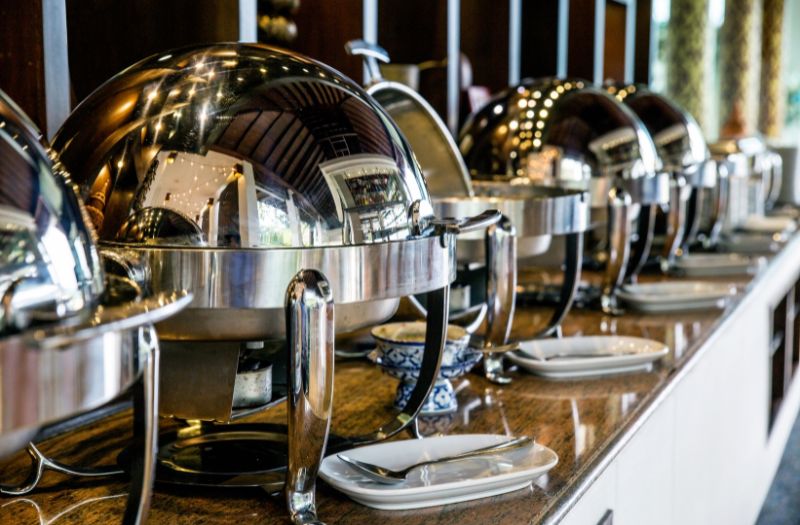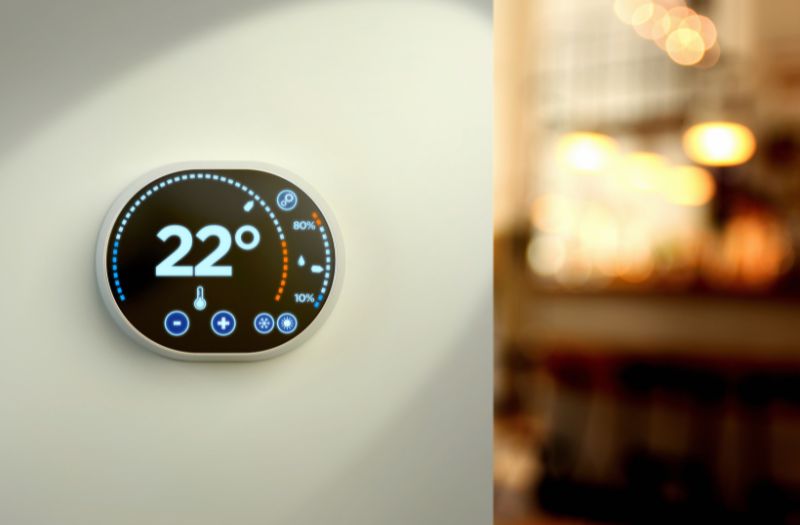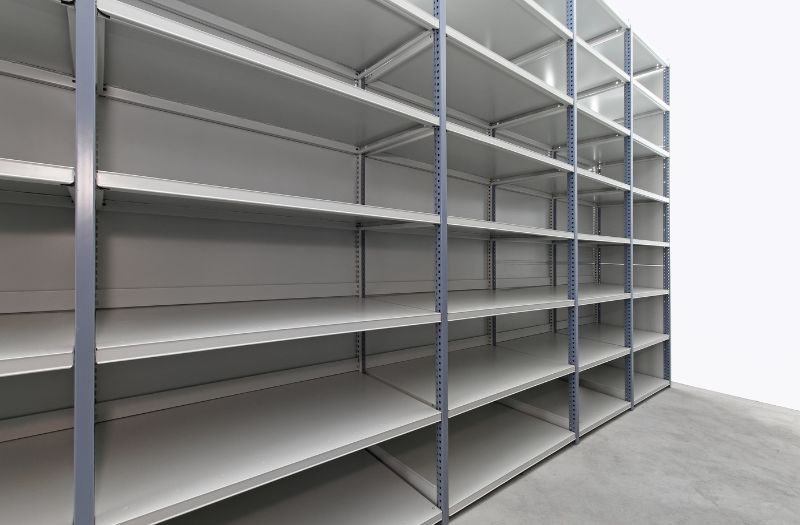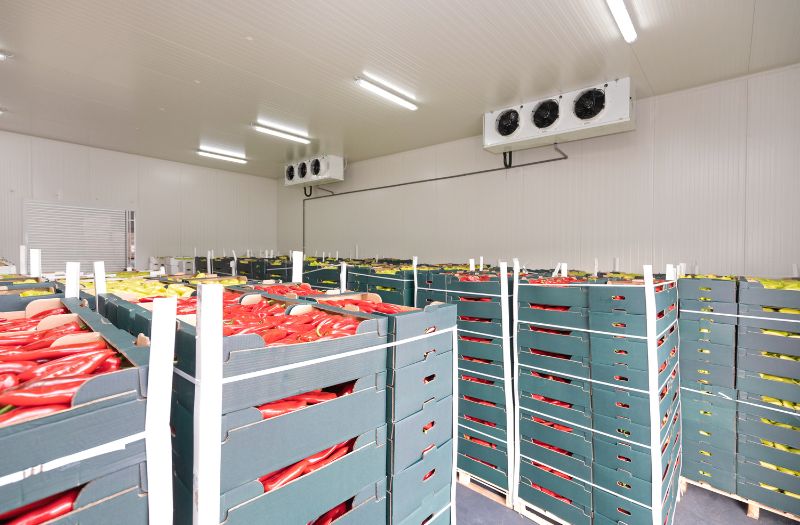Running a successful restaurant isn’t just about cooking up delicious meals. It’s about managing resources efficiently, including ingredients, equipment, and space. But with limited kitchen space and storage, many restaurant owners face a constant battle against clutter and disorganization. The solution? Self-storage.
Self-storage provides a smart, cost-effective way for restaurants to store bulk ingredients, seasonal items, and non-essential equipment offsite. In this post, we’ll explore how restaurants can take advantage of self-storage to keep their operations running smoothly, reduce clutter, and maximize efficiency.

Why Restaurants Need Extra Storage Space
Bulk Ingredient Storage
Buying ingredients in bulk is cost-effective, but space constraints can make it difficult to store large quantities of dry goods, canned items, and packaging materials.
A self-storage unit provides a climate-controlled environment where non-perishable items such as flour, sugar, rice, pasta, and spices can be safely stored without overcrowding the restaurant’s kitchen.
This extra space allows restaurant owners to take advantage of bulk purchasing discounts without sacrificing kitchen functionality.
Seasonal and Catering Equipment
Many restaurants adjust their operations seasonally, which means equipment and furniture that aren’t in use year-round can take up unnecessary space.
Patio furniture, outdoor heaters, catering supplies, and holiday decorations can be stored away until needed, freeing up valuable on-site space.
By using self-storage, restaurants can keep their space flexible and ready for seasonal changes without cluttering their primary work areas.
Backup and Specialty Equipment
Restaurants often have backup appliances, dishware, or specialized kitchen tools that aren’t used daily but are essential for certain occasions.
Instead of letting these items take up space in an already crowded kitchen, a self-storage unit keeps them safe and accessible for future use.
This ensures that if a piece of equipment breaks down unexpectedly, there’s a backup ready without the need to store it in an already full kitchen.

Extra Furniture and Seating
Additional tables, chairs, booths, and bar stools are often required for large events, renovations, or special dining setups.
Rather than cramming them into a storeroom or basement, they can be stored offsite and retrieved when needed.
This solution is particularly useful for banquet halls, event spaces, and restaurants that host private dining experiences.
Inventory Overflow
From disposable takeout containers to branded napkins and promotional items, restaurants accumulate a lot of extra inventory.
Keeping excess inventory in a self-storage unit prevents clutter and ensures a well-organized restaurant space.
By storing overflow items offsite, restaurants can maintain a clean and efficient work environment for employees.
Business Records and Office Supplies
Every restaurant needs to store financial records, employee documents, and tax paperwork.
Instead of letting these files take up valuable office space, a self-storage unit allows for safe and organized record-keeping.
This is especially beneficial for restaurants that have been operating for many years and need to retain past records for compliance purposes.

Choosing the Right Self-Storage Unit
Climate-Controlled vs. Standard Units
For restaurants storing perishable ingredients, wooden furniture, or delicate equipment, a climate-controlled unit is essential.
These units maintain stable temperature and humidity levels, preventing spoilage, mold, or warping.
If you’re storing non-sensitive items like metal furniture, extra utensils, or marketing materials, a standard unit may suffice.
Unit Size Considerations
Self-storage facilities offer various unit sizes. Consider your needs before renting a unit:
- Small units (5×5 or 5×10 feet): Ideal for documents, office supplies, or small kitchen tools.
- Medium units (10×10 feet): Suitable for extra seating, bulk dry ingredients, or small appliances.
- Large units (10×20 feet or more): Best for large equipment, surplus furniture, and large quantities of inventory.
Accessibility and Security
Ensure the storage facility provides easy access, especially if you frequently need to retrieve items. Look for:
- 24/7 access for flexible retrieval.
- Drive-up units for easy loading and unloading.
- Security measures like cameras, gated entry, and on-site staff.
Proximity to Your Restaurant
Choosing a facility near your restaurant minimizes transportation costs and saves time when accessing stored items.
The closer your storage unit, the easier it is to integrate it into daily operations without added logistical headaches.

How to Organize Your Self-Storage Unit for Maximum Efficiency
Use Shelving and Containers
Invest in heavy-duty shelving units to maximize vertical space. Store small items in clear, labeled bins for easy identification.
This prevents clutter and makes retrieval hassle-free, especially when dealing with a variety of restaurant supplies.
Maintain an Inventory List
Keep a detailed inventory of everything stored in your unit. Use a digital tracking system or a simple spreadsheet to track stock levels and locations of specific items.
Regularly updating this list ensures that you don’t forget about stored supplies and can quickly retrieve what you need.
Store Frequently Used Items Near the Entrance
Arrange your storage unit strategically so that items you need frequently are easy to access.
Less frequently used items can be stored in the back, ensuring that daily essentials are within reach.
Keep Dry Goods in Pest-Proof Containers
When storing bulk dry ingredients, use airtight, pest-resistant containers.
This prevents contamination and ensures food safety compliance, protecting your investment in high-quality ingredients.
Rotate Stock Regularly
Use the first-in, first-out (FIFO) method for stored ingredients and supplies.
This ensures older items are used before new stock, reducing waste and spoilage while keeping inventory fresh.

Cost Considerations: Is Self-Storage Worth It?
The cost of self-storage varies depending on the unit size, location, and whether it’s climate-controlled.
However, when comparing the expense to the potential cost savings from buying ingredients in bulk or avoiding the need for a larger restaurant space, many owners find it a worthwhile investment.
Factors Affecting Cost
- Location: Units in urban areas tend to be pricier.
- Size: Larger units cost more but may be necessary for restaurants with significant storage needs.
- Amenities: Climate control, security, and 24/7 access may increase costs but provide added benefits.
Real-Life Applications: How Restaurants Are Using Self-Storage
Catering Businesses
Caterers often have extensive inventories of serving trays, chafing dishes, linens, and portable cooking equipment.
Self-storage allows them to keep everything organized and ready for the next event without cluttering their primary workspace.
Seasonal Restaurants
Restaurants operating seasonally, such as beachside cafes or ski lodge eateries, need a place to store furniture, decorations, and extra inventory during the off-season.
Self-storage provides an ideal solution to keep everything safe and accessible for the next operating season.

Expanding Restaurants
Businesses undergoing renovations or expansions may need temporary storage for equipment and furniture until the new space is ready.
This ensures a smooth transition without compromising daily operations.
Food Trucks
Food truck owners often use self-storage for excess supplies, spare parts, and marketing materials since space inside a truck is extremely limited.
Having an organized offsite storage solution allows them to keep essential supplies without overcrowding their mobile kitchen.
Conclusion: The Key to a More Organized Restaurant
Self-storage provides restaurant owners with an affordable and practical solution to manage inventory, equipment, and supplies without overcrowding their workspace.
By choosing the right storage unit and organizing it efficiently, restaurant operators can maximize their kitchen space, reduce clutter, and streamline daily operations.
Investing in self-storage can lead to better efficiency, cost savings, and an overall smoother restaurant management experience.

If you’re looking for a storage facility to store your belongings, Snell Mini Storage has got you covered. At Snell Mini Storage, we offer a wide range of unit selections. To learn more about our self-storage facility, please check out our website at https://snellministorage.com/.

